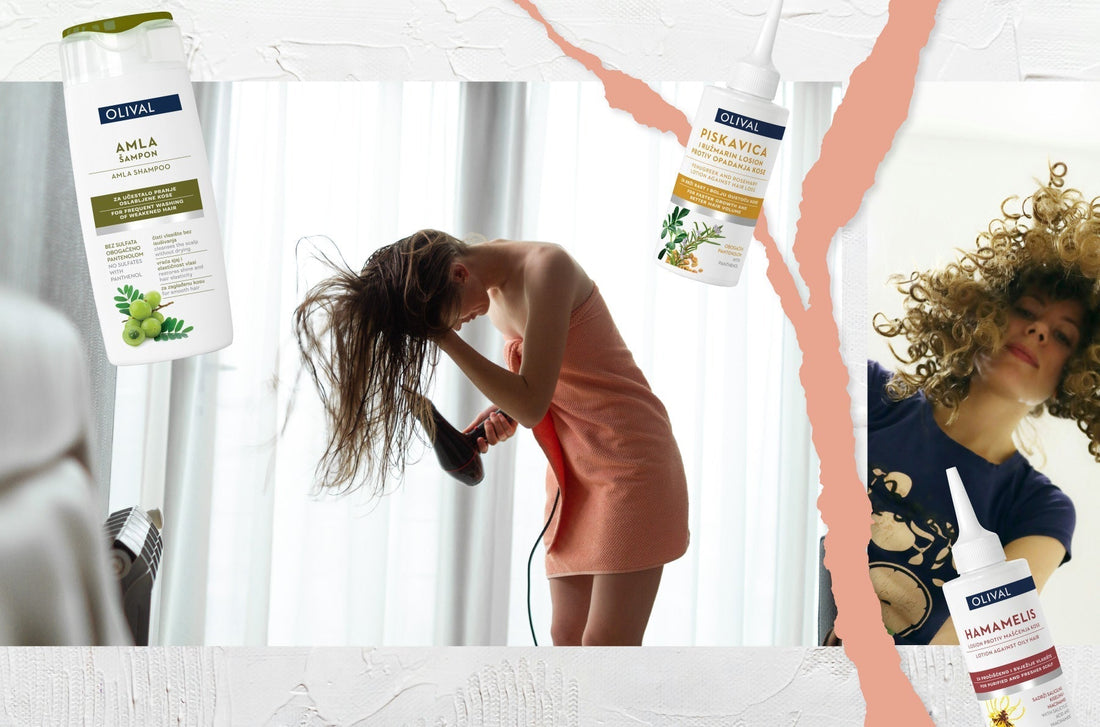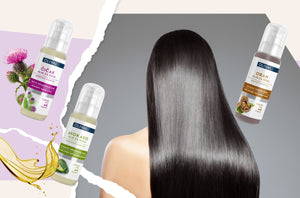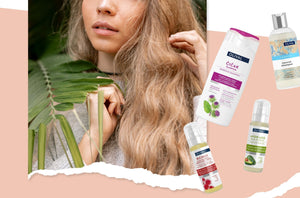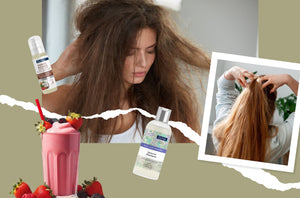Social media is flooded with tips, tricks and home recipes to achieve healthy, shiny hair and a balanced scalp. And while useful and verified information can be found among them, there are often claims that will do more harm than good. That's exactly why we decided to debunk some of the most common myths about hair and scalp care.
1. "The less often I wash my hair, the less oily it will be."
The idea that the scalp will be “trained” to produce less sebum if the hair is washed less often does not hold water. Sebum production depends on genetics and skin type, not on the frequency of washing. Infrequent washing can actually lead to a buildup of oil, dirt, and dead cells on the scalp, which favors the reproduction of microorganisms and can cause dandruff and itching. Using the right products can also make a big difference. It is good to introduce products like Hamamelis lotion into your routine, which, with frequent use, will deeply cleanse the scalp and contribute to a fresher look of hair.

2. "Air drying your hair is healthier."
Drying your hair naturally, or air drying it without using a hair dryer, can do more harm than good. It has long been believed that drying your hair naturally is healthier, as high temperatures can cause hair damage. However, keeping your hair moist for long periods of time is not good. When your hair is wet for a long time, the hair fibers absorb water and swell, and the constant expansion and contraction due to excessive moisture can cause so-called “hygral fatigue” - a condition in which the hair structure is damaged due to frequent swelling and weakening of the cuticle (the outer layer of the hair). A long-term damp scalp can also become more susceptible to the development of fungus and irritation. A safer practice is to gently blot excess water with a towel, apply heat protection, and then dry your hair with a dryer on a lower temperature, especially at the roots.
3. "Haircuts more often and your hair will grow faster."
Although regular removal of split ends contributes to healthier-looking hair, growth occurs from the follicles in the scalp and is not dependent on the ends. In other words, more frequent haircuts will not speed up growth, but they can prevent damage from spreading along the hair shaft, reduce breakage, and help hair look thicker and healthier. To stimulate hair growth, a much more beneficial approach is to massage the scalp and treat it with products that stimulate microcirculation. Fenugreek and Rosemary Anti-Hair Loss Lotion contains carefully selected herbal extracts that contribute to the revitalization of the scalp and can help accelerate hair growth. It is applied directly to dry scalp using an applicator, then gently but thoroughly massaged into the scalp – the longer, the better!
4. "One shampooing is enough."
A quick shampoo and a superficial rinse are not enough to completely remove excess sebum and styling product residue. Double shampooing is key! The first shampoo removes surface dirt and oil, while the second thoroughly cleanses the scalp and hair. Regardless of the type of shampoo, it is recommended to work it in your hands with a few drops of water until foam forms, and only then apply to the scalp. This allows for a more even distribution of the product and a more effective cleansing of the scalp.
5. "If your scalp doesn't squeak after washing, it's not clean enough."
“Squeaky clean” should not be taken literally when it comes to hair care. Hair and scalp can be thoroughly clean without that squeaky effect. Squeaking can mean that the natural protective lipid layer of the hair has been removed, which is not desirable. In this context, sulfate-free shampoos, such as Amla shampoo or Probiotic shampoo , are increasingly recommended. Unlike classic sulfate shampoos that create a rich lather and can dry out the scalp, these shampoos use gentler surfactants that create a fine, light lather that is effective enough to clean, but gentler on the scalp. The key to hair care is balance – removing excess, but not everything that the scalp naturally needs.



















